"Between Two Worlds" Documentary

About the Documentary
“Between Two Worlds” is a two part documentary which features the remarkable stories of Vietnamese Americans and their families in the Dayton community. Even though this documentary tells the stories of Vietnamese Americans in Dayton, Ohio, their stories exemplify untold stories of other Vietnamese Americans in small or big cities around the nation.
-
Between Two Worlds: Dayton’s Vietnamese-American Community (Part 1) tells the remarkable stories of Vietnamese Americans who made the painful decision to leave their homes in Vietnam, survive the rigors and dangers of the journey and overcome the challenges of making a new life in a strange land. An estimated 2 million people fled Vietnam between 1975-1995.
-
Between Two Worlds: The Next Generation (Part 2) examines the lives of seven second-generation Vietnamese Americans as they were buffeted by two cultures and struggled to fit in to U.S. culture at a time when America wanted to forget about the Vietnam War and its aftermath. The second generation ranges in age from the teens to the 40’s.
 About the Partnership
About the Partnership
This documentary is a partnership between ThinkTV-Greater Dayton Public Television and Wright State University’s Asian and Native American Center in commemoration of the 40th anniversary of the end of the Vietnam War (1975-2015).
Why this film?
It has been 40 years (1975-2015) when the last American helicopter left from the rooftops of Saigon marking the end of the Vietnam War and triggering a mass migration of South Vietnamese to the U.S. and other parts of the world. It has been 40 years since over 2 million people fled Vietnam via sea and land, seeking freedom from communism—a journey where it is estimated by the United Nations High Commissioner for Refugees that up to 400,000 perished. It has been 40 years since the ending of the Vietnam War and there is a generation of Americans who do not know about the Vietnam War because it is not taught in college.
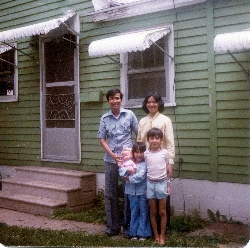 This year, 2015, marks a milestone for many Vietnamese Americans around the country. For the thousands of Vietnamese Americans who settled down in Dayton, Ohio, forty years ago, this year is the first time that they told the stories why and how they first made their journey to America, the severe challenges they encountered, and how they have rebuilt their lives in the new land. Their story is a common one among the Vietnamese community around the country. In story after story, there is a common refrain that life began at the bottom of those first arrivals. What happened in 1975 is left unsaid, but understood among everyone—the terrors of escaping by boat into rough seas filled with robbers and pirates along with hunger and thirst, the horrors of communist re-education camp. These memories are still too real for many immigrants.
This year, 2015, marks a milestone for many Vietnamese Americans around the country. For the thousands of Vietnamese Americans who settled down in Dayton, Ohio, forty years ago, this year is the first time that they told the stories why and how they first made their journey to America, the severe challenges they encountered, and how they have rebuilt their lives in the new land. Their story is a common one among the Vietnamese community around the country. In story after story, there is a common refrain that life began at the bottom of those first arrivals. What happened in 1975 is left unsaid, but understood among everyone—the terrors of escaping by boat into rough seas filled with robbers and pirates along with hunger and thirst, the horrors of communist re-education camp. These memories are still too real for many immigrants.
Many elder Vietnamese still cope with the trauma of war or years spent in communist re-education camps before fleeing in rickety boats, while their children struggle to understand them as they grow up American and speak better English than Vietnamese. There are those who still hold anger over what happened to Vietnam and have not been able to make peace with the past. For many, being Vietnamese Americans mean contending with a complex legacy of trauma, loss, bitterness and survival that they are reluctant to speak about their experiences for years—all of these seemed so far away for their children to understand, but it is their actual past.
Forty years have passed since the fall of Saigon in 1975 which led to the birth of the Vietnamese Diaspora. This film was made to preserve the remarkable stories of the Vietnamese who risked everything in search of freedom so the young generations of Vietnamese Americans will understand their ancestor’s history, to honor the experiences of those who survived to rebuild their new lives in America and eventually contribute to the rich diversity of their new homeland, and to honor the Vietnamese American history. The Vietnamese Americans now have a home. And it is here.
Who is in the film?
Daklak Do
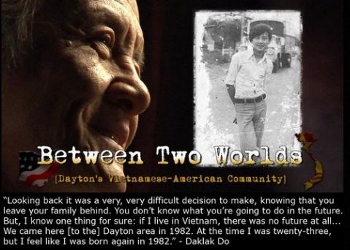
Daklak came from a large family of 13 children in Vietnam. His parents owned a small business but lost everything after the North communists took over Saigon in 1975. Daklak worked as a dish washer at local restaurants and graduated from the University of Dayton with a degree in Mechanical Engineering. He later founded Advanced Engineering Solutions, Inc. in Springfield and the company currently has over 100 employees.
Han Duong
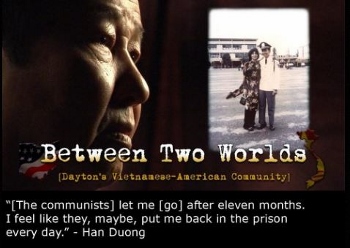
Han was a police lieutenant in Vietnam before the fall of Saigon in 1975. He and his wife, Thao Truong, and their two children escaped Vietnam in 1979 after spending years in the prison. In 1991, they moved to Dayton from Minnesota and opened the first Vietnamese grocery store. He worked 16 hours and sometimes 24 hours a day while owning the grocery store and is a very good handyman. He and his wife now devote their time to the Buddhist Temple to meet the spiritual needs of the Vietnamese and other Buddhists in the community.
Thao Truong
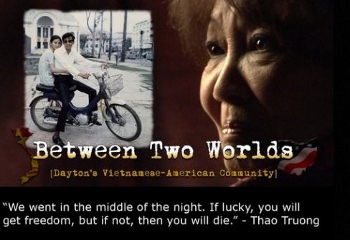
Thao escaped Vietnam with her family in 1979 and were sponsored by a Presbyterian Church in Minnesota from the refugee camp in the Philippines. In 1991, they moved to Dayton. She and her husband, Han Duong, opened a Vietnamese grocery store, the first in Dayton. She works as a social worker, Red Cross translator, GM worker, and home health care worker. After 24 years, she and her husband sold the business and now devote their time to the Buddhist Temple that they helped to build in Dayton.
Donald Nguyen
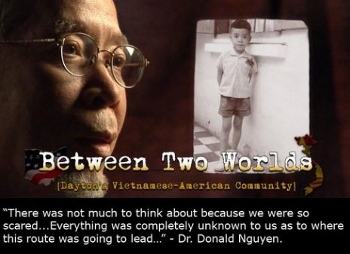
Donald came to the U.S. at the age of 17 after the fall of Saigon, Vietnam. With a humble start as a janitor and community college student, Donald received his Bachelor’s degree in mathematics and biochemistry and went on to graduate from the University of Wisconsin, Madison medical school. Donald is currently the Medical Director of Pediatric Urology at Dayton Children’s Hospital and Clinical Assistant Professor of Surgery and Pediatrics at Wright State University Boonshoft School of Medicine. He is a tireless advocate for increasing access to health care coverage and received the 2011 Doctors for America (DFA) “Health Activist of the Year” award, and the 2014 Charles W. Peckham Award for Humanitarian Leadership of the Community Action Partnership of the Greater Dayton area.
Tan Pham
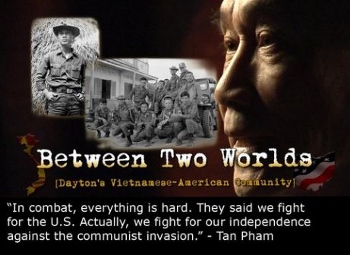
Tan lost his father at the age of 3 and attended Military School for military families. At the age of 19 he attended the Military Academy and became a commander in the Infantry Division in South Vietnam. He escaped Saigon after its fall to communism in 1975. He received an MBA degree from Wright State University.
Luong Vo
Luong Vo
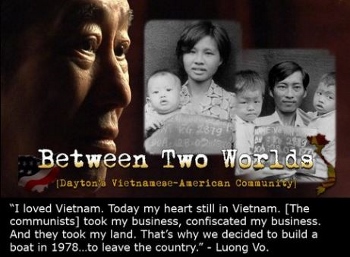
Luong is a farmer in Vietnam and came from a large family. After years of living in hardship under communism, he and his family fled Vietnam and eventually made their home in Dayton. Luong is an excellent carpenter and used his skills to help in remodeling broken and uninhabited houses in the neighborhood of West Dayton. His skills helped to transform the unsafe and desert neighborhood into a safer place to live for low income families.
Mai Nguyen
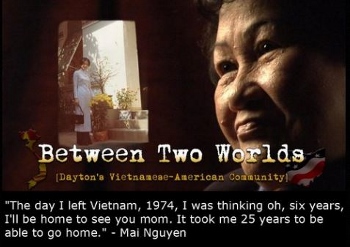
Mai came to the United States as a freshman and international student at Syracuse University in 1974. She was hoping to return to Vietnam in 6 years after receiving her Masters to become a teacher. She was heartbroken to see the fall of Saigon in 1975 from her dorm room in Syracuse. Instead of being able to go home in 6 years, it took her 25 years later to return home to see her mother for the first time. Mai currently is director of the Asian and Native American Center at Wright State University.
All photos courtesy of ThinkTV-Greater Dayton Public Television.
Resources
Introduction: Vietnamese Americans
Overseas Vietnamese communities in the West are composed principally of those who fled from southern Vietnam when the North Communist Vietnamese took over South Vietnam’s capital city of Saigon on April 30, 1975 which marked the end of the Vietnam War.
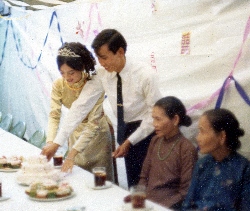 Vietnamese Americans are Americans who came from Vietnam but now live in the U.S. as their new home, or they are descendants of those born in Vietnam. The majority of South Vietnamese arrived in the U.S. as refugees at the end of the Vietnam War in 1975 for fear of persecution by the North Vietnamese government. There is a difference between refugees and immigrants. Refugees usually leave their country for fear of political and religious persecution, and even, execution. They often flee without preparing and often, do not have a clear destination in mind. Their main goal is to escape their country. On the other hand, immigrants generally plan and prepare their migration to a selected destination in search of better opportunities.
Vietnamese Americans are Americans who came from Vietnam but now live in the U.S. as their new home, or they are descendants of those born in Vietnam. The majority of South Vietnamese arrived in the U.S. as refugees at the end of the Vietnam War in 1975 for fear of persecution by the North Vietnamese government. There is a difference between refugees and immigrants. Refugees usually leave their country for fear of political and religious persecution, and even, execution. They often flee without preparing and often, do not have a clear destination in mind. Their main goal is to escape their country. On the other hand, immigrants generally plan and prepare their migration to a selected destination in search of better opportunities.
Many of the South Vietnamese refugees who escaped in 1975 left with U.S. military assistance. Others who attempted to escape later, usually by boat, thus the name “boat people” began to surface. Many Vietnamese paid boat operators most of their life savings to flee the country. Unfortunately, some greedy boat operators just took the money and negate their promise. Many families made numerous escape attempts before they became successful. Many boat people perished at sea from hunger, thirst, and attacks by pirates. Some were caught and detained in re-education camps where they endured harsh labor. Those who did escape, suffered horrific experiences at sea in witnessing the torturing or murder of their fellow refugees, friends, and family by pirates.
The Vietnamese refugees who came in 1975 and thereafter, entered through the Resettlement Camps in the U.S. These camps served as processing center to help resettle Vietnamese refugees to many areas throughout America. The U.S. government believed that this dispersion would help the refugees to better adapt to American culture and society. With the help of compassionate Americans, the refugees received food, shelter, clothing, and jobs to begin their new lives.
Vietnamese Americans, just like many other American immigrants, live in various places across the country, hold different types of occupations, and contribute to the U.S. in many ways. They have introduced their cultural practices, such as cuisine, religion, traditions, and live interwoven into the American fabric.
Vietnamese Immigrant Population in the U.S.
The Vietnamese immigrant population is the fourth largest foreign-born population from Asia, after India, the Philippines, and China.
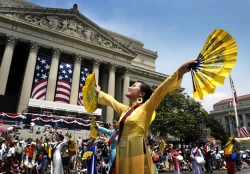 Where do Vietnamese Live
Where do Vietnamese Live
Most Vietnamese immigrants settled in California (40 percent) and Texas (12 percent), followed by Washington State (4 percent), Florida (4 percent), and Virginia (3 percent) pooled 2008-12 ACS data show. The three counties with the most Vietnamese immigrants were all in California: Orange County, Los Angeles County, and Santa Clara County. Together, the three counties accounted for 26 percent of the Vietnamese immigrant population in the United States.
The Vietnam War: A Summary
The U.S. involvement with Vietnam started around 1945 which stemmed from its desire to help France re-establish its colonial rule, rationalized in terms of preventing the French Communists coming to power in Paris and preventing the spread of Communism to Vietnam and other parts of East Asia.
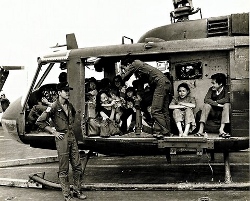 This war formally ended in July 1954 with the Geneva Conference, which resulted in the Geneva Agreements which divided Vietnam into two governments at the 17th parallel, the South Vietnamese government was supported by the U.S., while the North was a Communist government led by Ho Chi Minh.
This war formally ended in July 1954 with the Geneva Conference, which resulted in the Geneva Agreements which divided Vietnam into two governments at the 17th parallel, the South Vietnamese government was supported by the U.S., while the North was a Communist government led by Ho Chi Minh.
By the 1960s, the U.S. became increasingly involved in Vietnam and more American troops were sent to fight against the North Communist Vietnamese.
In January 1973, the United States entered into the Paris Peace Accords with North Vietnam. The agreement officially ended the United States' involvement in the Vietnam War and called for the permanent ceasefire between North Vietnam and South Vietnam. President Richard Nixon promised the South Vietnamese leadership, more specifically President Nguyen Van Thieu, that he would recommit American forces to Vietnam if the North Vietnamese violated the peace agreement.
Unfortunately, with Nixon’s resignation, the United States no longer posed a viable threat to the North Vietnamese goal of unification.
With the majority of the United States removed from the war, North Vietnam prepared for a final offensive, known as the Spring Offensive of 1975. On December 13, 1974, the North Vietnamese invaded South Vietnam. By January 6, North Vietnam had defeated many South Vietnamese provinces. President Gerald Ford, who had just assumed office in August 1974 following Nixon's resignation, pleaded with Congress to send aid to bolster South Vietnam. His plea was ultimately rejected.
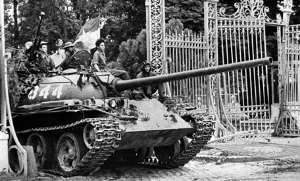 From January to April, 1975, North Vietnam systematically marched through important areas in South Vietnam after capturing the Central Highlands, followed by the cities of Hue and Da Nang, and Cam Ranh Bay. With these strategic losses, President Thieu resigned on April 21, but not before issuing a scathing criticism of American policy in Vietnam. Regardless, North Vietnam turned its focus to the capital city of Saigon.
From January to April, 1975, North Vietnam systematically marched through important areas in South Vietnam after capturing the Central Highlands, followed by the cities of Hue and Da Nang, and Cam Ranh Bay. With these strategic losses, President Thieu resigned on April 21, but not before issuing a scathing criticism of American policy in Vietnam. Regardless, North Vietnam turned its focus to the capital city of Saigon.
On April 30, 1975, North Vietnamese forces steamrolled through the gates of the presidential palace in Saigon and hoisted the North Vietnamese flag. Televised broadcasts captured the fall of Saigon, which marked the official end of the Vietnam War and the beginning of mass migration of Vietnamese people to the United States and various countries around the world.
The Vietnam War: Chronology of Key Events
- 1858 - French colonial rule begins.
- 1930 - Ho Chi Minh founds the Indochinese Communist Party (ICP).
- 1941 - ICP organizes a guerrilla force, Viet Minh, in response to invasion by Japan during World War II.
- 1945 - The Viet Minh seizes power. Ho Chi Minh announces Vietnam's independence.
- 1946 - French forces attack Viet Minh in Haiphong in November, sparking the war of resistance against the colonial power.
- 1954 - Viet Minh forces attack an isolated French military outpost in the town of Dien Bien Phu. The attempt to take the outpost lasts two months, during which time the French government agrees to peace talks in Geneva.
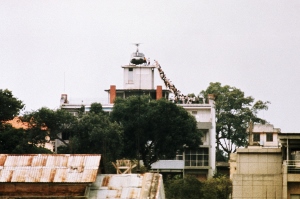 Vietnam is split into North and South at Geneva Conference.
Vietnam is split into North and South at Geneva Conference.
- 1956 - South Vietnamese President Ngo Dinh Diem begins campaign against political dissidents.
- 1957 - Beginning of Communist insurgency in the South.
- 1960 - American aid to Diem increased.
- 1962 - Number of US military advisors in South Vietnam rises to 12,000.
- 1963 - President Diem is overthrown and then killed in a US-backed military coup.
The United States enters the war.
- 1964 - Gulf of Tonkin incident: the US says North Vietnamese patrol boats fire on two US Navy destroyers. US Congress approves Gulf of Tonkin Resolution, authorizing military action in region.
- 1965 - 200,000 American combat troops arrive in South Vietnam.
- 1966 - US troop numbers in Vietnam rise to 400,000, then to 500,000 the following year.
- 1969 - Ho Chi Minh dies. President Nixon begins to reduce US ground troops in Vietnam as domestic public opposition to the war grows.
- 1970 - Nixon's national security advisor, Henry Kissinger, and Le Duc Tho, for the Hanoi government, start talks in Paris.
- 1973 - Ceasefire agreement in Paris, US troop pull-out completed by March.
- 1975 - North Vietnamese troops invade South Vietnam and take control of the whole country after South Vietnamese President Duong Van Minh surrenders.
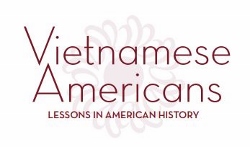
Vietnamese Americans--Lessons in American History
Click on the link below for information about Vietnam and Vietnamese Americans both before 1975 and after 1975.
Source: http://www.tolerance.org/sites/default/files/kits/vietnamese_timelines.pdf
Interested in learning more about the Vietnam War?
We recommend the following articles published during the 40th anniversary of the end of the Vietnam War for your consideration:
- After the Fall of Saigon (April 6, 2015)
- Forty years on from the fall of Saigon: witnessing the end of the Vietnam War (April 21, 2015)
- Leaving South Vietnam during the fall of Saigon: “there was no place to hide” (April 20, 2015)
- The Last Days in Saigon
- Still rootless: the child refugees of Vietnam War’s chaotic final day (April 15, 2015)
- Legacies of War (April 17, 2015)
- The Vietnam War as Seen by the Victors (April 16, 2015)
- Setting the record straight on Vietnam’s War end (I): Some false assumptions (April 14, 2015)
- Setting the record straight on the end of the Vietnam War (II): How it really ended (April 15, 2015)
- Setting the record straight on the end of the Vietnam War (III): Not a lost victory (April 18, 2015)
- Setting the record straight on the end of the Vietnam War (IV): Facts are important (April 20, 2015)
- The U.S. has forgotten about the Vietnamese
Interested in screening the documentary?
Colleges/universities, non-profit organizations, and groups working in the area of diversity are encouraged to contact nicolyn.woodcock@wright.edu if interested in screening the film for educational purposes. The film and educational toolkit will be free of charge. For some geographical locations, the interviewees may be able to attend in person or they can participate via Skype for a Q/A. In return, we ask that you tell us about your event. Where it was held? What were the comments from the audience? What went well, and what was challenging? Your feedback will help others in organizing successful screenings.

